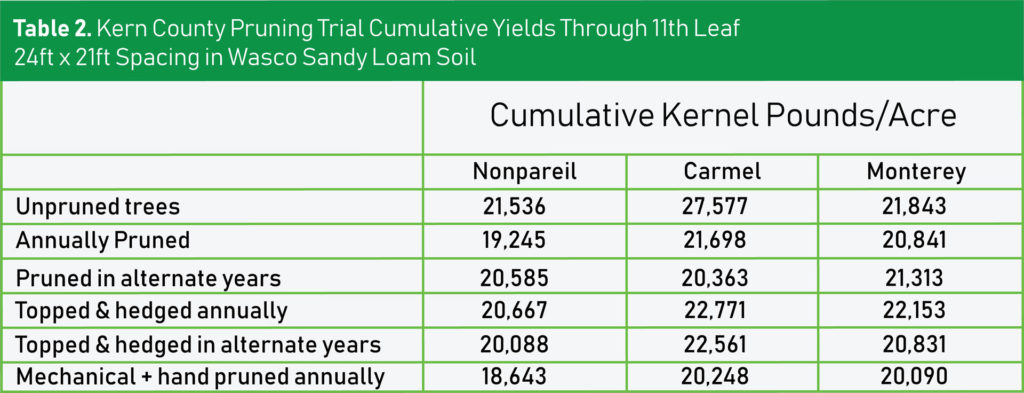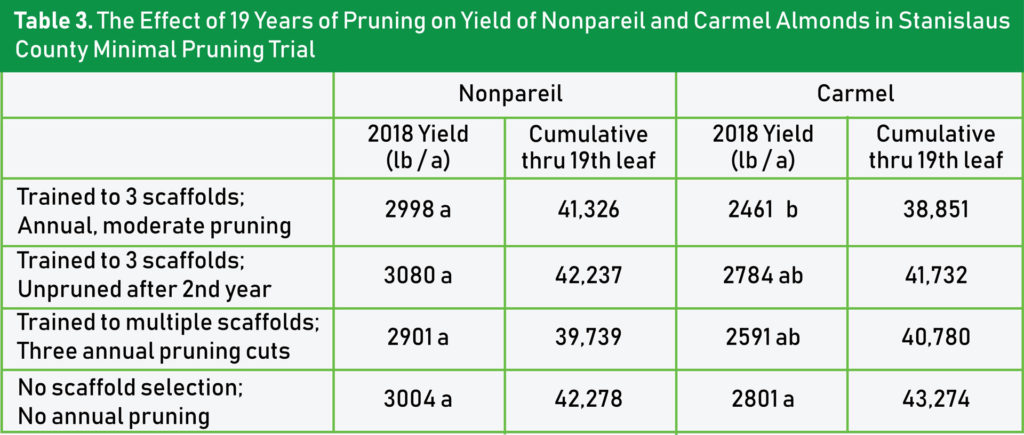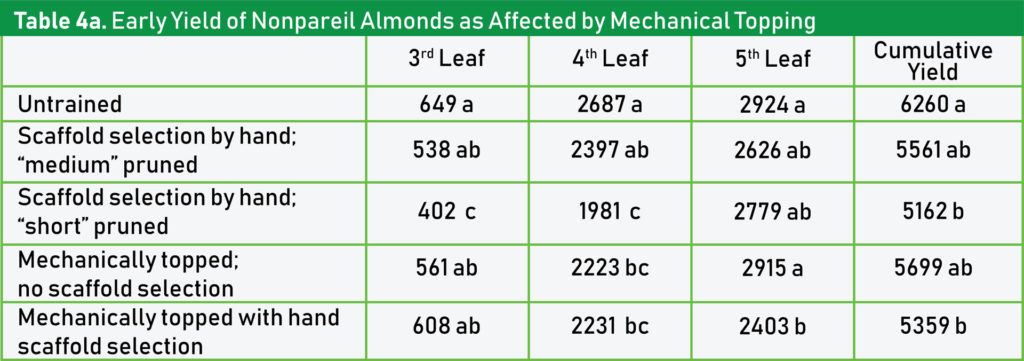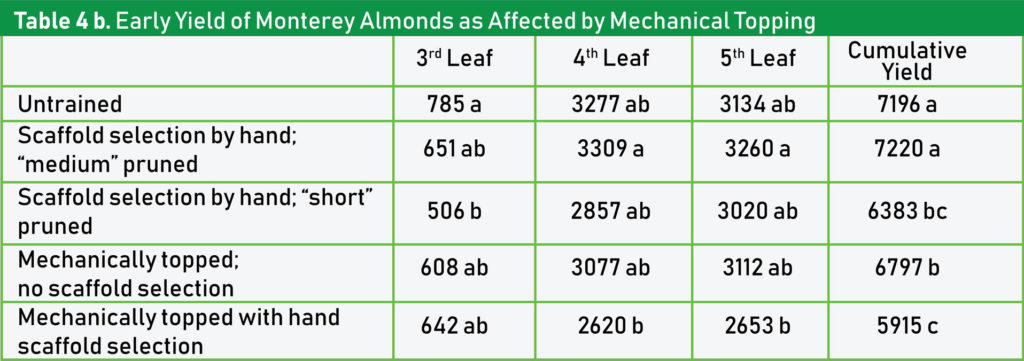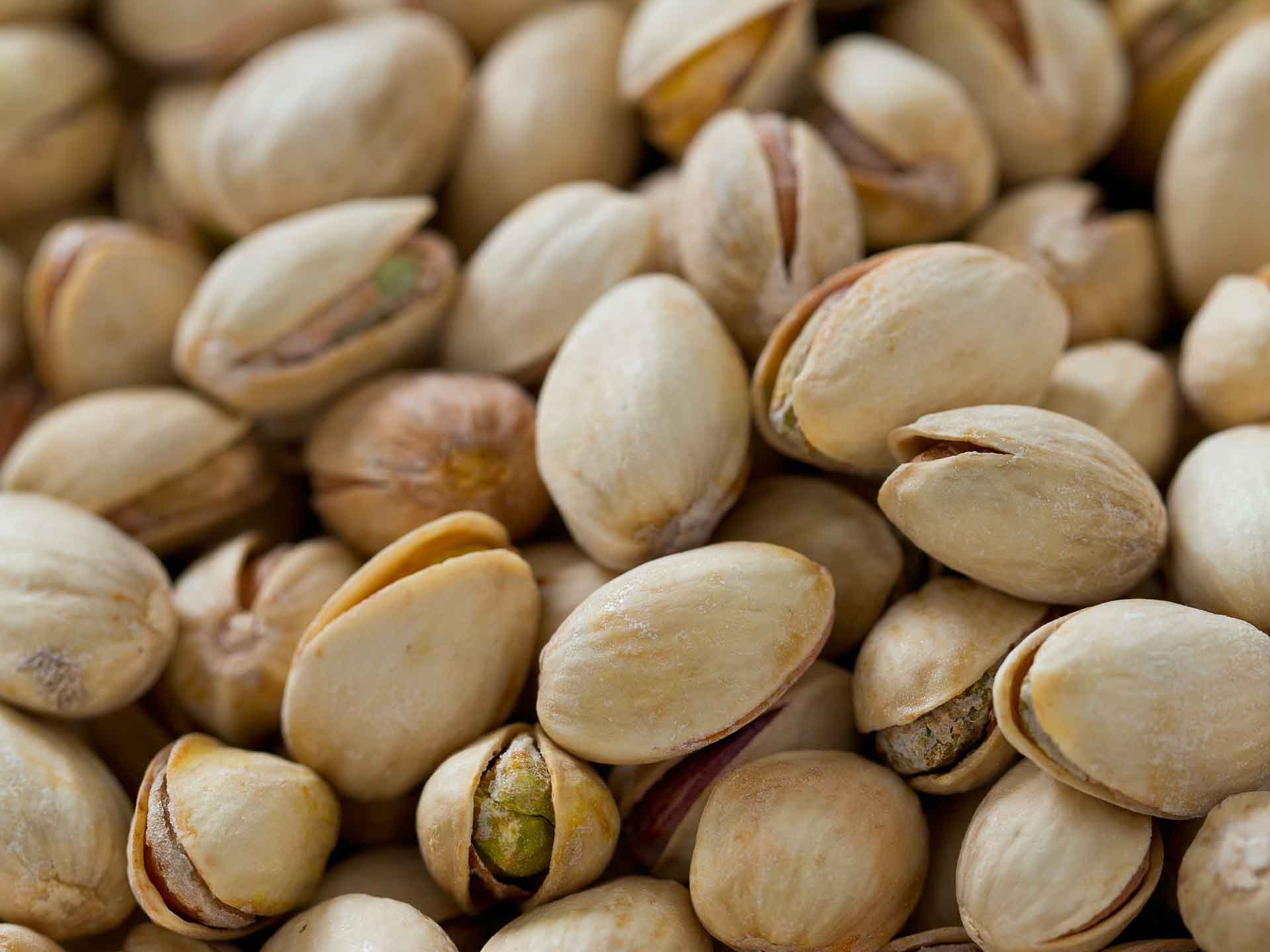After the final windrows of the season are swept and picked up, many almond growers consider whether they should prune their bearing almond trees. The answer depends on what the goals might be. Limbs that are broken, diseased, are in the way of cultural practices or present safety concerns should be periodically removed. If the goal is to increase or prolong yield of the orchard, the answer is probably no. Past and current University of California (UC) trials suggest that growers are not getting a return on their pruning investment if their goal is to improve yield. In fact, the numbers suggest the opposite: the more growers prune, the more they may reduce their yields and profits, even in the long term.
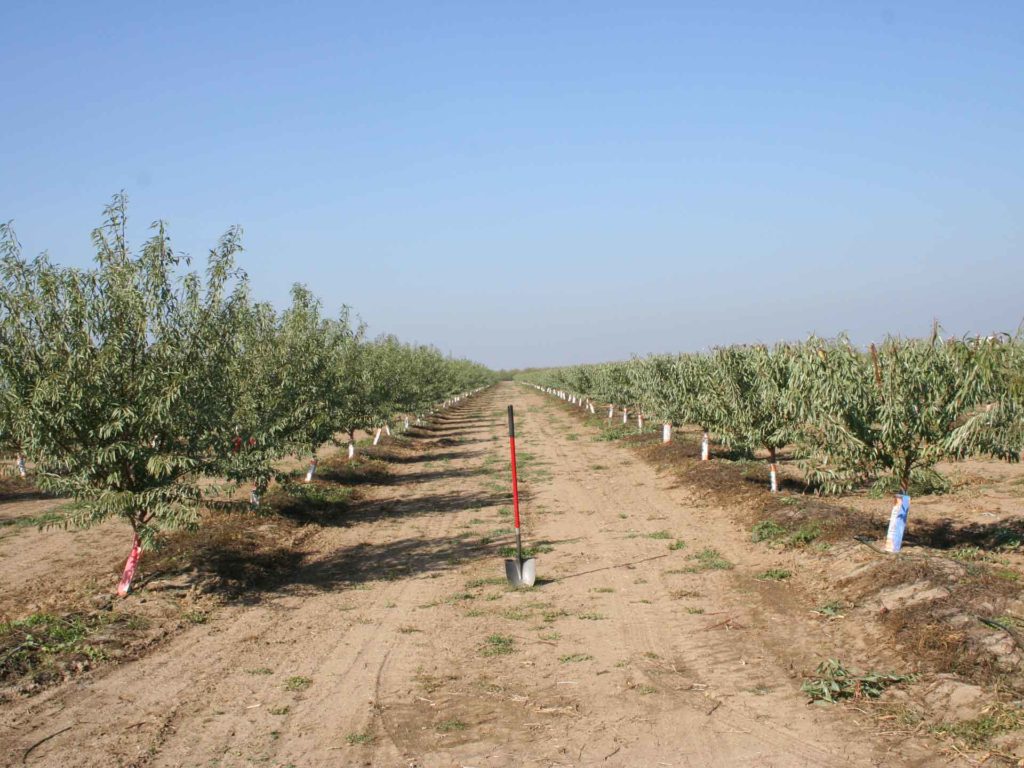
One of the first long-term trials to look at minimal pruning of almond was as at the Nickels Estate Soil Lab in Arbuckle, conducted by now retired University of California Cooperative Extension (UCCE) farm advisor, John Edstrom. Planted in 1979, this trial examined the best way to maintain yields in closely spaced trees. After 21 years, “unpruned” Nonpareil trees were still yielding as well or better than trees that had been pruned every year for the life of the orchard (Table 1). In the 21rst and final year of the study, unpruned trees produced 2307 pounds per acre compared to 2136 pounds per acre in the annually pruned trees. Over the 21-year span, cumulative yields were 35,082 pounds per acre in the “unpruned” trees compared to 34,176 pounds per acre for trees that were pruned every year. In this case, the grower would have paid to prune for 21 years and would have had 906 fewer pounds of almonds in the end.
Since then, at least three other long-term trials have been conducted in the northern, southern and central parts of the state. John Edstrom established a second trial at Nickels in 1997 with a tree spacing of 16 feet x 22 feet. Now monitored by UCCE advisor Franz Niederholzer, the yield results from this second field trial continue to question the need for regular pruning to maintain almond production. Both Nonpareil and Monterey showed no significant yield differences between annually pruned and unpruned trees in cumulative yield for over 20 years.
Kern County Trial
Prior to his retirement, Kern County UCCE Farm Advisor, Mario Viveros, compared trees that were pruned annually or semi-annually by hand or mechanically. These trees were spaced widely by today’s standards (24 feet x 21 feet) and were planted in a deep Wasco Sandy Loam soil. In the eleven-year-old trial, cumulative Nonpareil yields were 2291 pounds per acre higher in unpruned trees than trees that were pruned conventionally every year for eleven years (Table 2). Carmel yields were 1879 pounds per acre higher in unpruned trees. Mechanical topping and hedging, whether done every year or every other year also did not increase yields. Yields were lowest in trees that were pruned by hand and mechanically hedged each year.
Stanislaus County Trial; 2000-2018
In Stanislaus County, I started a long-term pruning trial to verify to myself that pruning did not improve yield. The trial includes Nonpareil and Carmel on Nemaguard and Hansen rootstocks with in-row tree spacing of 22 18, 14 and 10 feet. I included the following four pruning treatments:
- “Standard” training to three scaffolds, followed by annual pruning.
- Standard training for two years, then unpruned thereafter.
- “Minimal” training to multiple scaffolds, followed by annual pruning.
- No scaffold selection and only occasional removal of limbs in the way of cultural practices.
Table 3 shows that Nonpareil yields were almost identical in 2018 whether trees had been annually pruned for 19 years or not. Cumulative yield in annually pruned Nonpareil trees is about 900 pounds less than trees that were trained for two years and then left essentially unpruned for the last 17 years. Pruned Carmel trees yielded a little less than unpruned trees in 2018 and have accumulated about 4400 pounds less than trees that were not trained and have been essentially unpruned for 19 years. Including yield loss and $150 per year in pruning costs, annual pruning would have reduced gross income by more than $9,000 per acre over the 19 years of this trial.
Mechanical Topping of Nonbearing Trees
Some almond growers in windy areas consider mechanically topping their almond trees in the fall after the first growing season to quickly reduce tree height in an attempt to reduce tree leaning and/or blowover during the winter. It has been suggested that topping might lead to shorter, bushier, more productive trees. The short and long-term effects of this practice need to be evaluated.
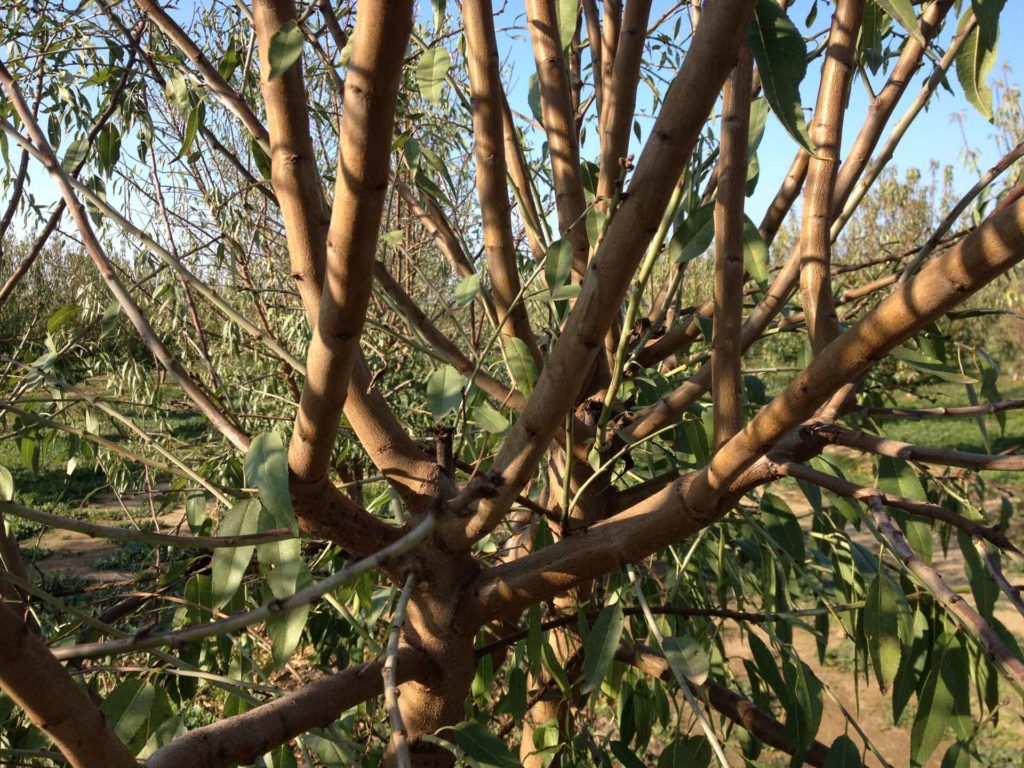
A field trial was established in November 2014 in a first-leaf Nonpareil and Monterey orchard on the vigorous Titan peach/almond hybrid rootstock. Prior to topping, Nonpareil trees were over nine feet tall and the Monterey were about eight feet tall. Trees in this trial were either mechanically topped to a height of 5.5 feet by a custom operator or left untopped. Topped and untopped trees were subjected to various levels of scaffold selection by a hand pruning crew for initial tree training. All trees have been minimally pruned after the first year. We have compared tree size, anchorage and yield through the 5th leaf.
Effect of Topping:
- Although mechanical topping initially reduced tree height substantially, topped trees were just as tall as untopped trees by the end of the next season. Topping resulted in very vigorous shoot regrowth, and a “crows’ nest” effect where the cuts occurred. It is unknown if this crows’ nest will lead to more rapid shade out of the lower canopy.
- As did all pruning treatments, topping reduced trunk circumference compared to unpruned trees for two years but trunks were of similar size by the 5th leaf. Although pruning (topping) can cause vigorous regrowth of shoots, it is a stunting process overall, including trunks and roots.
- Topping did not improve tree anchorage. Some leaning started during the first growing season, prior to topping in the fall. Because of the vigorous regrowth, topped trees may have had thicker canopies by the end of the second growing season.
- After five years, cumulative yields of topped Nonpareil trees, with or without follow up scaffold selection by hand, was similar to trees that were conventionally trained by hand.
- Mechanical topping reduced yield of Monterey, especially in trees that had follow up scaffold selection by hand.
- The most expensive pruning treatment was mechanical topping with follow up scaffold selection by hand.
Summary
Untrained trees and trees trained to multiple scaffolds are more susceptible to scaffold failure, especially during the development years. Untrained trees are also somewhat more prone to blow over the first couple of years due to a larger canopy. The more closely trees are planted down the row, the smaller they will stay and the less training and follow up pruning they will require.
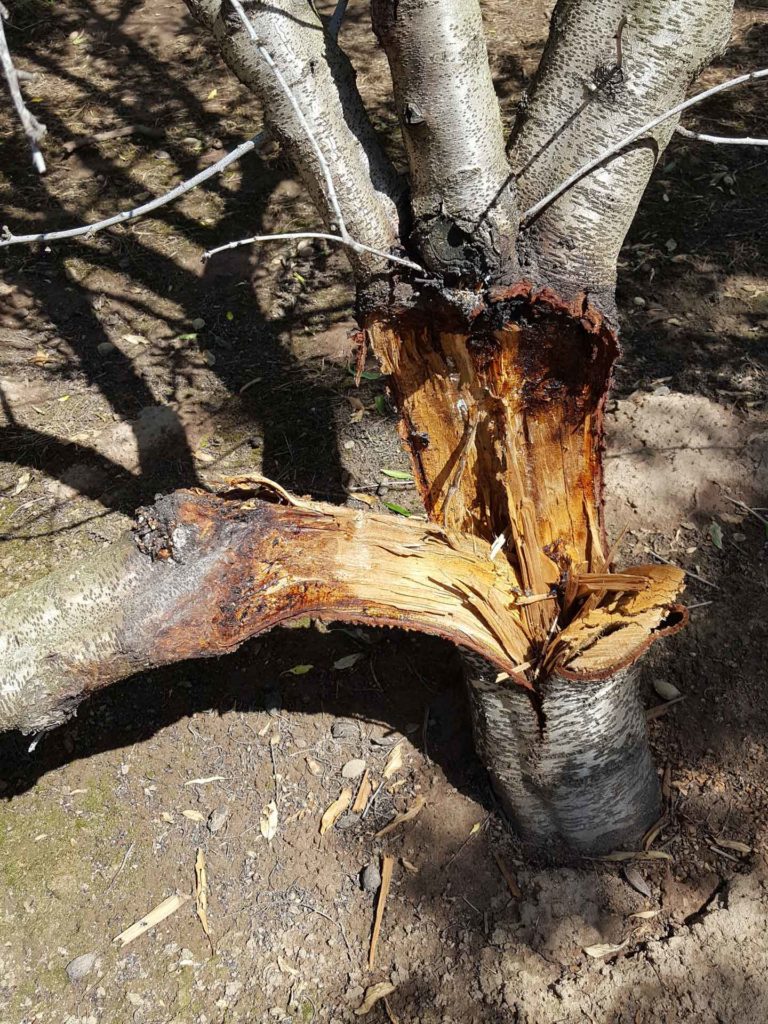
Training non-bearing trees is a compromise, often sacrificing a few hundred pounds to build a strong tree architecture to reduce the risk of future tree failure. A good strategy seems to be to train the trees during the first two years to 3-5 scaffolds and head them back enough to support their own weight when growth resumes the next year. The longer you leave the scaffolds, the less rank regrowth and the fewer root suckers you will have the following year. However, if you “long prune” the scaffolds, you will need to tie the limbs to lessen the risk of them breaking out later. After training your trees for one or two years, you can likely abandon pruning except to remove limbs that are in the way of equipment or present safety hazards for equipment operators.
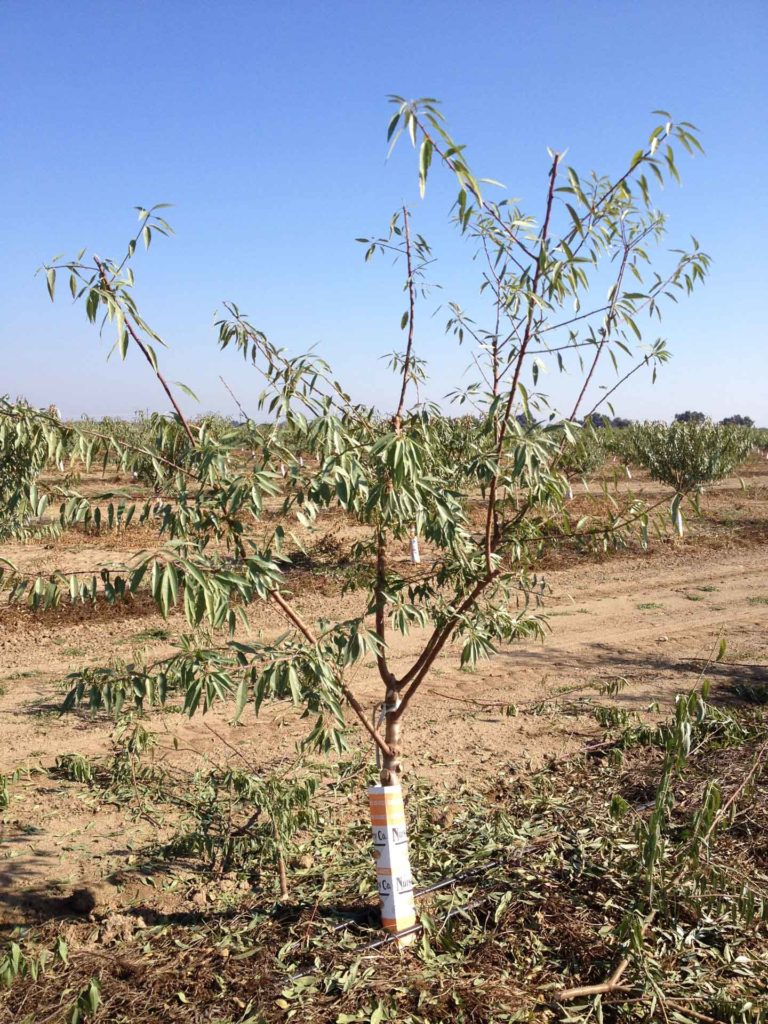
Mechanical topping of young trees may offer a quick, relatively inexpensive way to reduce tree height, at least for one year. However, it appears that topping, just like all types of pruning, is an overall stunting process and likely reduces yield in many cases.




